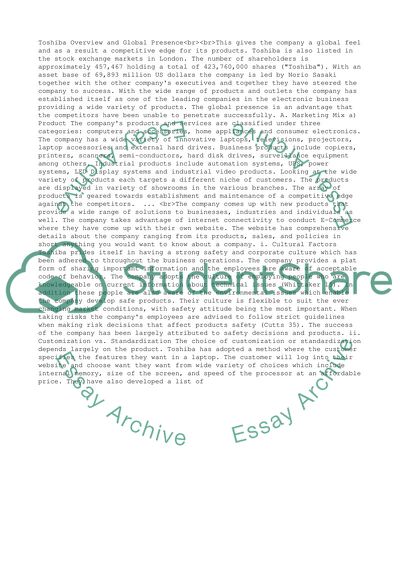Cite this document
(“Toshiba Overview and Global Presence Research Paper”, n.d.)
Retrieved from https://studentshare.org/business/1474445-toshiba-overview-and-global-presence
Retrieved from https://studentshare.org/business/1474445-toshiba-overview-and-global-presence
(Toshiba Overview and Global Presence Research Paper)
https://studentshare.org/business/1474445-toshiba-overview-and-global-presence.
https://studentshare.org/business/1474445-toshiba-overview-and-global-presence.
“Toshiba Overview and Global Presence Research Paper”, n.d. https://studentshare.org/business/1474445-toshiba-overview-and-global-presence.


